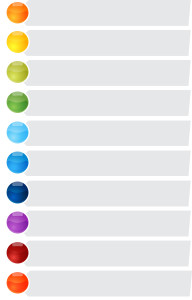Establishing Order on the Planet of Your Blog
 “Establish order on the planet of your blog by using proven structures for your blog posts,” advises Tracy Gold of the Content Marketing Institute. Gold suggests a few possible blog post frameworks:
“Establish order on the planet of your blog by using proven structures for your blog posts,” advises Tracy Gold of the Content Marketing Institute. Gold suggests a few possible blog post frameworks:
- Q and A
- Case study
- Comparison/metaphor
- Yes/No debate
Q and A
I tell new Indianapolis blog content writers that, in creating content for SEO marketing blogs, we need to keep in mind that people are online searching for answers to questions they have and for solutions for dilemmas they’re facing. But even if those searchers haven’t specifically formulated their question, I suggest we do that for them by presenting a question in the blog post itself and then answering it.
Case study
Back in Journalism 101 class, we were taught to “put a face on the issue” by beginning the article with a human example. Stories of all kinds, including case studies and customer testimonials help personalize your blog post.
Comparison/metaphor
Of 1,000,000,000,000,000,000,000,000,000,000,0000 snowflakes that have fallen on earth, no two are identical. Snowflakes form around particles of dust and sea salt, but the conditions of temperature and moisture are different each time. The “nucleus” around which business blog posts are formed is their topic, but there is endless variety in how that topic is presented. Metaphors “wake up” blog content by making unusual comparisons.
Yes/No debate
Helping readers sort truth from myth is one important use for business blogs. In the natural order of business, many of misunderstandings about a product or service present themselves, and shining the light of day on misinformation shines light on your own expertise in your field. Even when there is no final answer, blog content writers can summarize the different schools of thought and recap the research that is being done in the field. That in itself can go a long way towards making your blog a “go-to” place for readers seeking information relating to your industry or profession.
Establish order on the planet of your blog!

 “There’s little that our brains crave more than effortlessly acquired data,”
“There’s little that our brains crave more than effortlessly acquired data,” 
 Biomass is what scientists use when there’s no way to do an exact count, Bill Chapell explained in an NPR radio broadcast five years ago, referring to the “fact” that The Day We Hit 7 Billion (October 31, 2011), was actually impossible to prove; it is impossible to count all the world’s people alive at any particular moment. So, he says, the experts estimate by calculating biomass.
Biomass is what scientists use when there’s no way to do an exact count, Bill Chapell explained in an NPR radio broadcast five years ago, referring to the “fact” that The Day We Hit 7 Billion (October 31, 2011), was actually impossible to prove; it is impossible to count all the world’s people alive at any particular moment. So, he says, the experts estimate by calculating biomass.  Remember the story of Goldilocks and how the little girl tried sitting in each of the Three Bears’ chairs? After rejecting the first two chairs because they were the wrong size, she tries the third: “Ahhh, this chair is just right,” she sighs. That’s exactly the sensation you want your reader to have about your blog post! But, as was the case with Goldilocks, it’s going to take some testing to achieve that result.
Remember the story of Goldilocks and how the little girl tried sitting in each of the Three Bears’ chairs? After rejecting the first two chairs because they were the wrong size, she tries the third: “Ahhh, this chair is just right,” she sighs. That’s exactly the sensation you want your reader to have about your blog post! But, as was the case with Goldilocks, it’s going to take some testing to achieve that result.
Follow us online!